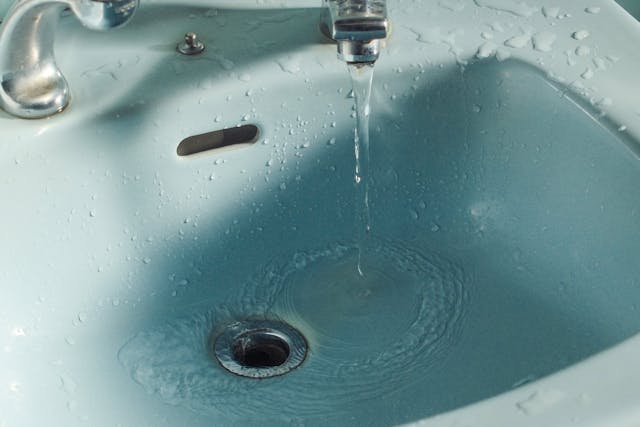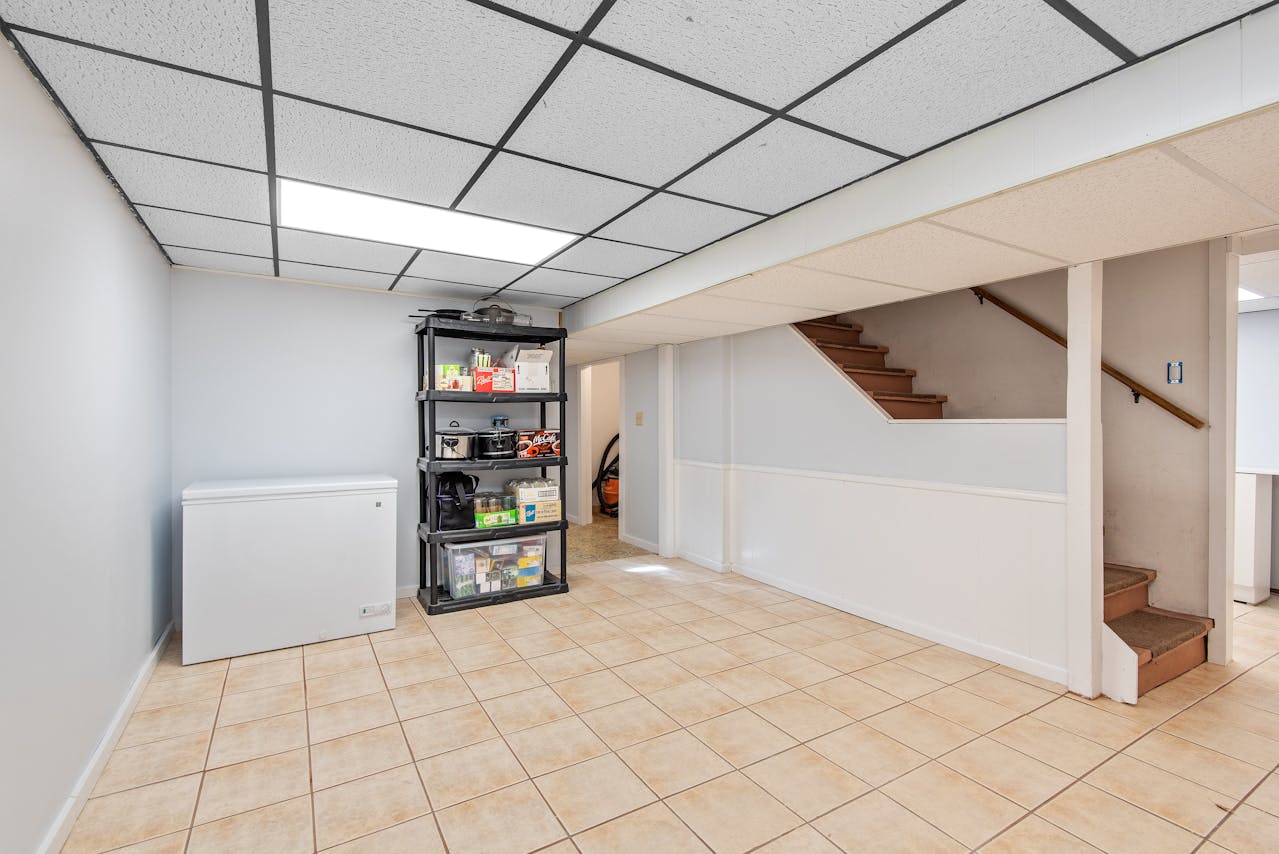
When heavy rain hits, water can start finding its way into places it should not be. One of the most common spots where this happens is the basement. A leaking basement is more than just a mess. It can lead to mold, musty smells, and long-term damage to your home. The good news is that there are many simple ways to stop this from happening. With regular checks and small home improvements, you can help keep your basement dry.
How to Find the Source of the Basement Leak
Before you can fix a leaking basement, you need to find out exactly where the water is coming from. Basement moisture can appear in different areas, and each source may need a different solution. The following checks can help you locate the cause of the problem.
Check for Wall Stains and Damp Spots
Start by examining your basement walls for visible signs of water. Basement wall leaks often appear as dark patches, wet lines, or peeling paint. These spots may become worse after heavy rain or melting snow. Run your hand along the wall surface to feel for moisture.
Basement moisture on the walls is usually caused by water intrusion from outside. This happens when rainwater builds up in the soil and presses against the foundation. If the walls are cool and damp, this may be a sign that water is seeping through porous concrete or small cracks.
Look Around Windows and Window Wells
Leaking basement windows are a common entry point for water. Inspect each window, especially those that sit below ground level. Look for wet sills, rust, water streaks, or fog between window panes.
Check the condition of the window wells. If they are filled with leaves, dirt, or standing water, rainwater drainage may be blocked. Water can collect and leak through old window frames or loose seals. Basement waterproofing products like window well covers or new seals can help prevent this.
Examine the Floor and Base of the Walls
Water seepage can also enter from the joint where the floor meets the wall. Check these areas for puddles, stains, or white mineral deposits known as efflorescence. These signs often appear after repeated water intrusion events.
If the floor is wet or shows signs of damage, the issue may involve high groundwater or a failed vapor barrier. In some cases, floor leaks point to sump pump problems, especially if the pump pit is near the wet area and not functioning properly.
Inspect for Foundation Cracks
Walk around the interior and exterior of your foundation and look for cracks. Foundation cracks can allow rainwater or groundwater to enter the basement. Some cracks are small and harmless, but others widen over time and let in water.
Note the size and direction of any crack you find. Horizontal cracks are often more serious than vertical ones. If you are unsure, monitor the crack over time or consult a professional. Sealing foundation cracks is a key part of basement waterproofing.
Test During or After Rain
Sometimes, the best way to find the source of a leak is to check the basement during or just after a rainstorm. Bring a flashlight and look for fresh signs of water movement, such as trickles, drips, or wet patches.
This method helps you confirm if water seepage is caused by outside rainwater or something else. It also shows you which areas need better rainwater drainage or sealing. Take photos of the leak location to use as a reference for repairs.
Rule Out Plumbing Leaks
Not all water in the basement comes from outside. Inspect nearby pipes, water heaters, and basement laundry setups for signs of leaks. A pipe may be dripping, or a hose may be loose.
Unlike water seepage caused by rain, plumbing leaks may happen even during dry weather. If the moisture appears under a sink, near a water line, or by the washing machine, the source could be inside. Fixing plumbing issues early prevents damage from getting worse.
Use Tape or Chalk to Track Leak Points
If you are unsure where the water is coming from, mark suspected areas with painter’s tape or chalk. Check these areas again after the next storm. This helps you confirm which spots are active leak points.
This simple step makes it easier to plan basement waterproofing work. Whether you are sealing cracks, adjusting downspouts, or checking sump pump problems, knowing the exact location helps save time and effort.

What to Do If Your Basement Is Leaking
If your basement starts leaking, the most important step is to act quickly. Water damage can spread fast and cause long-term problems. Whether it is a small puddle or full basement flooding, taking the right steps early helps protect your home and belongings.
Move Belongings Out of the Water
The first thing you should do is remove any furniture, boxes, electronics, or storage bins from the wet area. Items made of fabric or paper can absorb water and grow mold if left for too long.
Try to move things to a dry room or upstairs if possible. If basement flooding is still happening, avoid plugging or unplugging electronics near the water for safety reasons. This step reduces further water damage and helps you focus on the cleanup process.
Clean Up Standing Water
Once the area is clear, begin basement water removal right away. Use a wet vacuum for small puddles. For larger amounts of water, a sump pump or water pump may be needed.
This stage is a key part of emergency water cleanup. If your sump pump is not working, check for a sump pump backup or blockage. Remove as much water as you can to prevent further damage to flooring, walls, or nearby appliances.
Dry the Area as Soon as Possible
After removing the water, you need to dry the space completely. Use fans, a dehumidifier, or open windows (if it is dry outside) to speed up the drying process.
Drying a flooded basement helps prevent mold and mildew. Concrete and drywall hold moisture longer than they appear to. Run the dehumidifier for several days if needed, especially if the basement is fully enclosed.
Identify the Leak Source
Once things are under control, find out where the water came from. Look for wall cracks, floor joints, a clogged sump pump, or signs of a foundation leak.
This helps you decide which wet basement solutions will work best for the future. If the leak came during heavy rain, check gutters, downspouts, or window wells. If it happened during dry weather, check nearby plumbing for hidden issues.
Check for Hidden Moisture
Water can soak into drywall, flooring, or insulation. Even if the surface looks dry, trapped moisture can still cause problems. Check the walls and baseboards for swelling, warping, or soft spots.
You may need to remove part of the wall or carpet padding to prevent mold from forming. If the water sat for more than 24 hours, the risk of mold increases. This is an important part of water leak cleanup that many homeowners overlook.
Take Photos for Documentation
If the leak caused damage, take clear photos of all affected areas. Include the water levels, damage to walls or floors, and anything that needs replacing.
This step is helpful for insurance claims and keeps a record of the issue. Be sure to include pictures before, during, and after cleanup. Photos also help contractors give better advice if you hire someone for foundation leak repair or basement waterproofing.
Plan Preventive Fixes
After cleaning up the current leak, it is important to make changes to stop it from happening again. This could mean sealing foundation cracks, adding a waterproof basement floor coating, or replacing damaged window seals.
Depending on the cause, you may also need to improve drainage, extend your downspouts, or test your sump pump more often. These steps are part of long-term wet basement solutions that protect your home during future storms.
Start Your Quote Today
Our licensed specialist will search for the best insurance quotes and will email you when ready.



